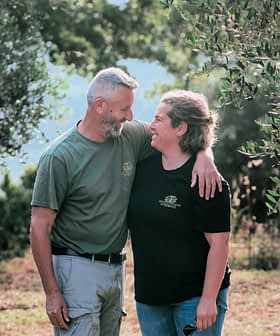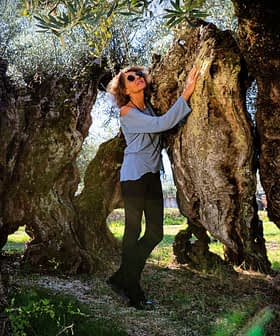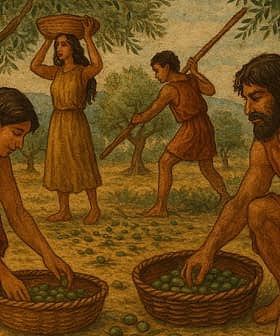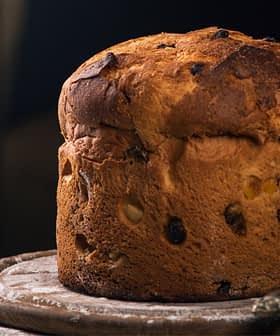From Milan to Puglia, Extra Virgin Olive Oil Lies at The Heart of Christmas Cooking in Italy
While every region in Italy celebrates the Christmas period differently, all rely on local extra virgin olive oils to enhance their meals.
An angel announced the birth of Jesus in Bethlehem to shepherds, bringing joy to all people. In Italy, Christmas traditions vary by region, with extra virgin olive oil playing a key role in enhancing flavors and pairing with festive dishes such as marinated anchovies, spaghetti with bottarga, and cod with olives and tomatoes.
“I bring you good news of great joy which will be for all the people; for today in the city of David there has been born for you a Savior, who is Christ the Lord.”
Thus, according to the evangelist Luke’s account, an angel announced to some shepherds, who were watching over their flocks nearby Bethlehem, the birth of Jesus in a manger.
The right extra virgin olive oil highlights the dish, enhancing its flavors, but must not overwhelm or disappear in respect of the food.
The bliss of that night more than 2,000 years ago still shines in the most heartfelt holiday for Italians: Christmas – a Christian holy day that sends out a powerful message of love and sharing that is also celebrated by non-believers and those of other faiths.
For many, festivities culminate with Christmas Eve dinner on December 24th, while in some areas, people prefer to gather for lunch on the 25th. As a result, there is no one-size-fits-all rule regarding Italian Christmas food traditions.
See Also:EVOO Shines in Michelin Star Chef’s Traditional Christmas Eve DinnerIn a country with rich cultural and traditional heritage, the preparation of a local dish generally changes from one town to the next, and the choice of specialties in festive meals varies according to the area – in Italy, one cannot talk about tradition without talking about territoriality.
Yet, among the myriad of delicious variations on the theme, one ingredient applies to all of them: at Christmas, extra virgin olive oil is essential on all Italian tables.
“The right extra virgin olive oil highlights the dish, enhancing its flavors, but must not overwhelm or disappear in respect of the food,” the olive oil sommelier and Euro-Toques chef Fabrizio Bertucci told Olive Oil times. “We try to combine the organoleptic properties of the two elements to give the palate sensations that leave a mark, particularly on a special occasion like this.”
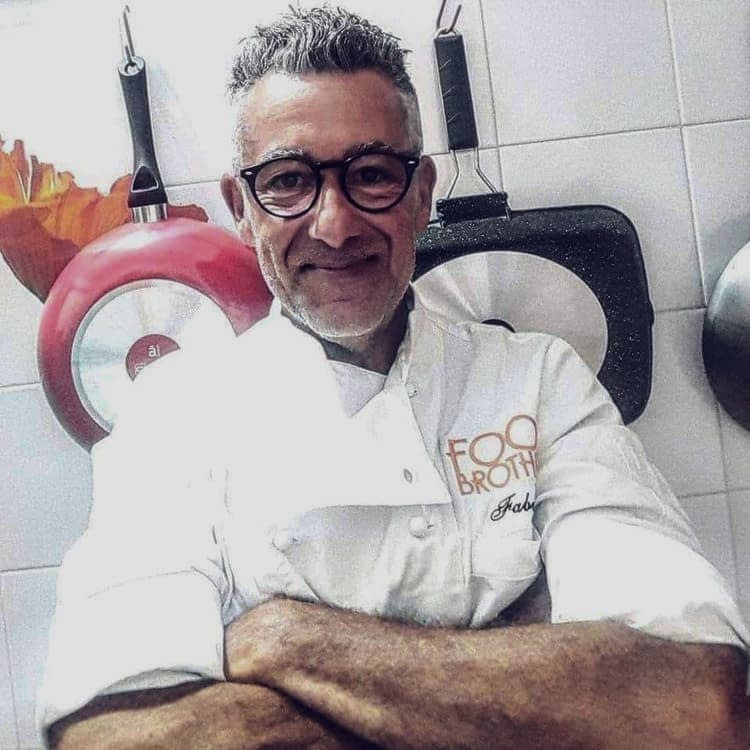
Fabrizio Bertucci
“I, therefore, recommend stocking up on different extra virgin olive oils before you start preparing your Christmas meals,” he added. “We must take into account their intensity, fruitiness and scents. When we talk about traditional food, the autochthonous olive varieties fit well in the recipes usually linked to the territory.”
We must remember that, in line with an ancient precept that has become a tradition, Christmas Eve dinner does not contain meat, which is allowed on Christmas lunch.
“It would be ideal to have at least one light fruity oil, given the prevalence of seafood on the dinner table,” Bertucci said. “An intense fruitiness can be chosen for the more structured dishes that dominate the lunch on the 25th, then a few others according to the distinctive characters of each dish and for cooking.”
See Also:Recipes with Olive OilFor those conscious of purchasing and opening multiple bottles of olive oil at once, a bottle of extra virgin olive oil can be used many more times after an event.
Furthermore, the higher the quality of a product, the more its taste stands out and the less needed on a plate, guaranteeing an excellent quality-to-price ratio.
Consider this while reading about some of the dishes from different Italian regions and culinary inspirations paired with extra virgin olive oils by the sector’s professionals.
“Among the appetizers of the Christmas dinner, I prepare marinated anchovies,” said Federico Iavicoli, chef and owner of Fuorinorma in Rome. “This blue fish has always been part of the tradition of Roman cuisine with cod, as an important fish market was once located at the Portico di Ottavia in the heart of the city.”

Federico Iavicoli
Considering a portion of five or six anchovies per guest, Iavicoli cleans, debones and removes the heads from the fish. (Note: Keep the anchovies in the freezer for at least 24 hours if made at home to render them safe).
He then puts them in layers of coarse salt, adding thyme, for about 25 minutes. Next, he carefully removes the salt and adds a previously made mix of pepper grains, a peculiarity of the Roman-style marinade, lemon juice and wine vinegar, leaving the anchovies to marinate for no more than 20 minutes.
“At the end, I pour lemon zest, finely chopped parsley, and the oil,” Iavicoli said. “I use a light fruity monovarietal, choosing between Canino, Frantoio or Leccino from Lazio or southern Tuscany, or even a Tonda Iblea from Sicily or a Ligurian Taggiasca.”
The first dish comes from Stefano Sorci, chef and owner of L’Oste Dispensa, located on Giannella beach in the province of Grosseto, who prepares his Spaghetti alla bottarga di Orbetello.
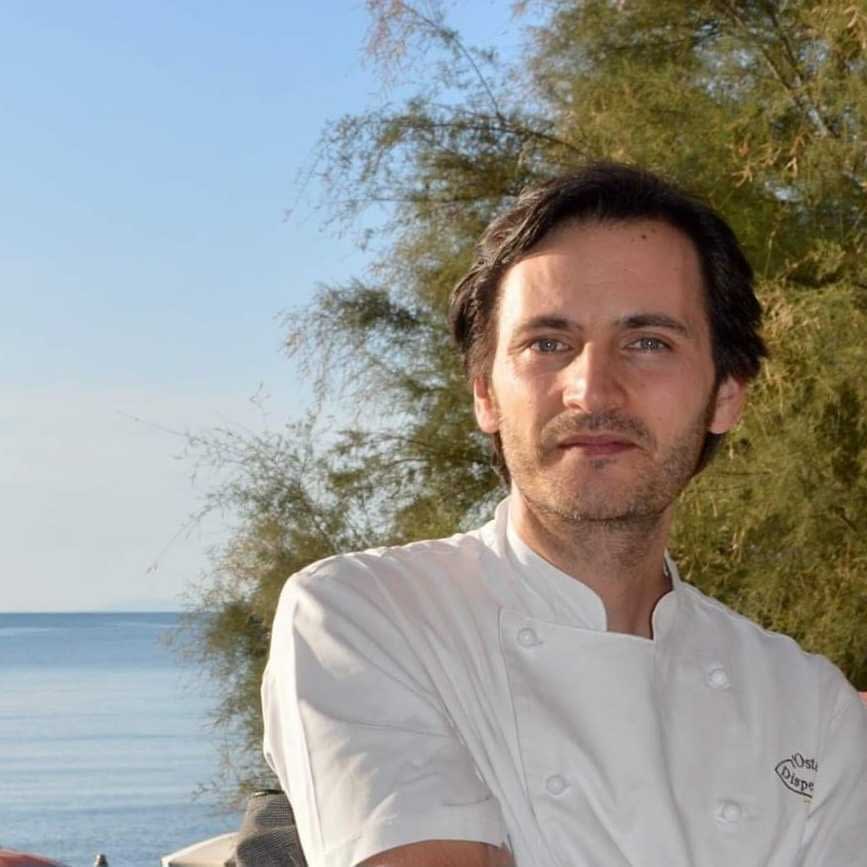
Stefano Sorci
“This bottarga (roe) is obtained from dried and cured eggs of mullet fish from the Orbetello Lagoon,” he explained. “With a rich biodiversity, it has been a protected area since 1971 and has great environmental importance. It is no coincidence that the Orbetello bottarga is a Slow Food presidium linked with the traditional fishing of the area.”
As he boils the spaghetti in plenty of salted water, Sorci pours the oil into a pan with chili pepper, parsley and garlic, cooking them at a temperature no higher than 60 °C.
He then adds lemon juice and a little bit of the water in which the pasta was cooked and lets the pan sit, allowing the stew to aromatize.
Once the spaghetti is cooked al dente, Sorci pours it into the pan and starts creaming. When a creamy sauce is released, he adds 150 grams of the previously grated roe and allows it to emulsify, making it homogeneous.
“I complete it with thin slices of bottarga and a drizzle of oil,” Sorci said. “In this preparation, I use an organic blend produced near Mount Amiata with Correggiolo, Leccino and Olivastra seggianese.”
The second Christmas Eve dish comes from Puglia, Italy’s largest olive oil-producing region. It requires two extra virgin olive oils to be used while cooking and as a garnish.
“The ‘Cod of the poor peasant’ in this area is traditionally prepared for the feast of the Immaculate Conception, December 8th, and again on Christmas Eve,” said Emanuele Natalizio, chef and owner of Il Patriarca in Bitonto in the province of Bari.
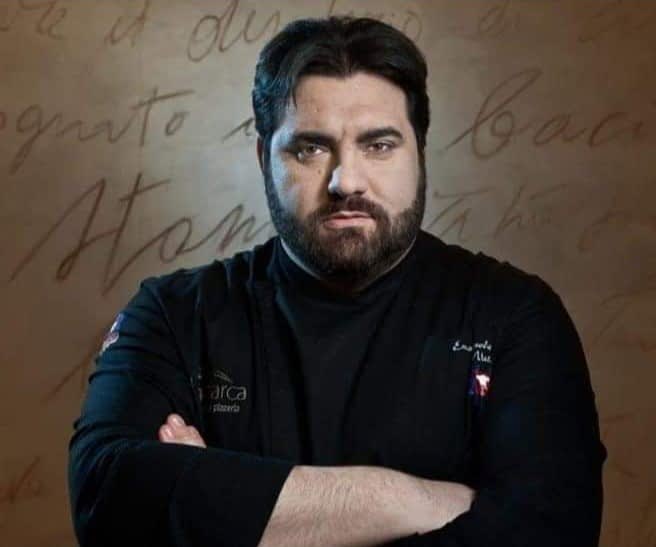
Emanuele Natalizio
He slices a layer of potatoes to cover the bottom of a clay pan before adding the second layer of freshly peeled tomato.
Natalizio then puts the desalted and skinned cod on it and tears tomatoes by hand, adding them on top of the cod with red onion, basil, parsley, sweet pitted olives and a drizzle of monovarietal Ogliarola Cima di Bitonto olive oil.
Next, he put the dish in the oven at 200 ºC to 220°C for about one hour. Halfway through, he adds breadcrumbs, torn tomato and a bit of water.
“At the end, we pour pecorino cheese, grated or used in a fondue and finish with a round of Coratina,” Natalizio said. “During cooking, a grouping of flavors arises from the combination of the various ingredients which enhance the cod, together with the cheese.”
“After the light intensity of the Cima di Bitonto oil during preparation, a structured one like Coratina heightens the aromas obtained at the end,” he added.
When it comes to sweets, Panettone is a must-have dessert during Christmas. Originally from Milan, it requires a slow and complex preparation that includes butter, but in recent years a version with extra virgin olive oil has taken hold.
“We carried out various tests and research,” said the pastry chef Luca Lacalamita, owner of the bakery and pastry shop Lula in Trani, Puglia. “We wanted to obtain a product similar in structure to the traditional one.”

Luca Lacalamita
“We created a vegetable butter composed mostly of Coratina extra virgin olive oil, coconut oil and cocoa butter emulsified with lecithin,” he explained.
Lacalamita said the result is a bright green vegetable butter that he uses in the dough, which has three phases of kneading and fermentations with mother yeast.
“We also include a paste made with orange, lemon, and bergamot,” he added. “Its aroma goes perfectly with the scents of the monovarietal.”
In Tuscany, Andrea Perini, chef and owner of Al 588 in Bagno a Ripoli, near Florence, and Tommaso Vatti, pizza chef at La Pergola di Radicondoli in the province of Siena, created a panettone with a blend from their region.
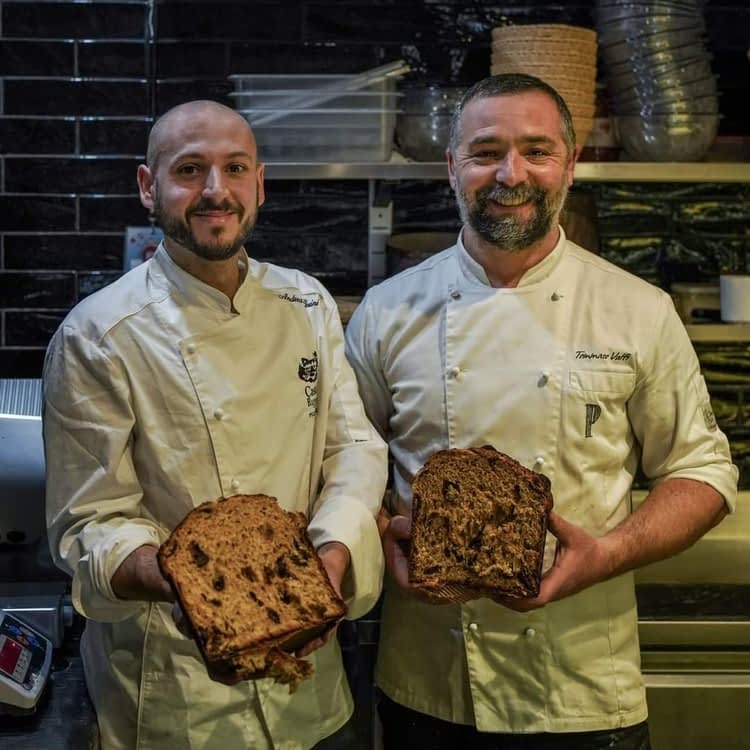
Andrea Perini
“We usually choose a very scented product from this area, green of leaf, artichoke, cardoon, and not very bitter,” Perini said. “Alternatively, we would use an Itrana. We combined it with cocoa butter in a vegetable mass that we incorporate into our classic flavor panettone dough.”
“What is essential to start our meal on the 25th is a bruschetta, a toasted bread slice drizzled with the new oil,” he added while presenting the menu of its Christmas lunch. “Then, as an appetizer, I would prepare a good Chianina fillet tartare with a drizzle of a Frantoio, Moraiolo, and Leccino blend. It counteracts the meat’s sweetness with its bitterness and spiciness, enhancing its features.”
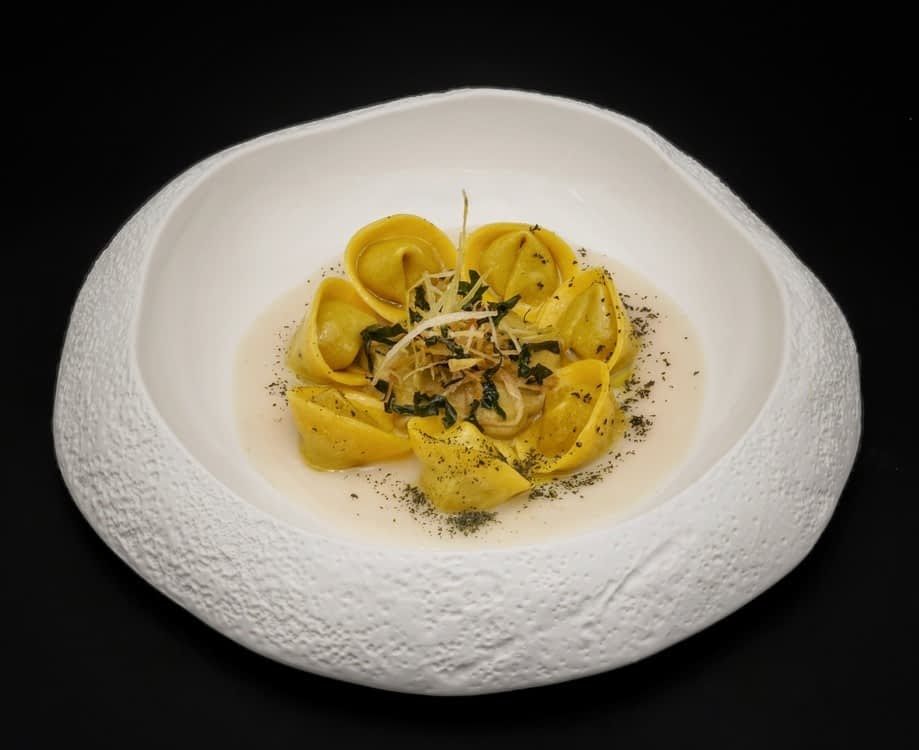
Cappelletti in broth (Photo: Andrea Perini)
Perini goes on with cappelletti in broth as a first course. “I complete this fresh pasta filled with bread soup with a Frantoio monovarietal that is spicy and explosive, with green and balsamic notes, as required by the filling that has a prevalence of black cabbage,” he said.
“As a second course, a nice piece of Casentino gray piglet, cooked at low temperature and grilled, can be served with a puree made with Leccino, balanced in bitterness and spiciness, that gives a fresh grass taste to the potatoes,” Perini concluded.
Share this article



